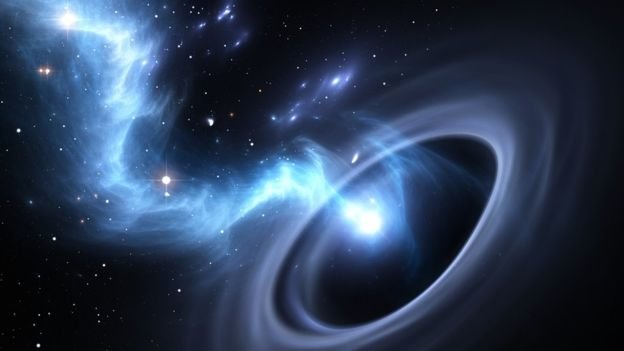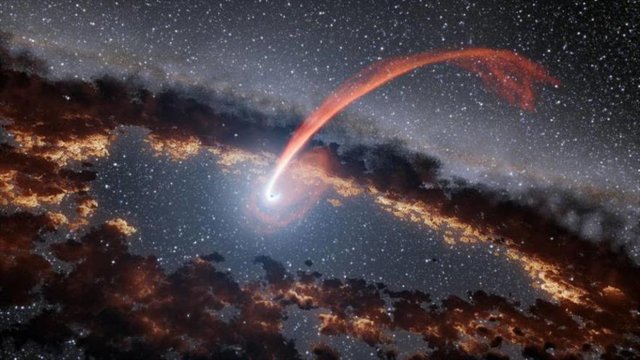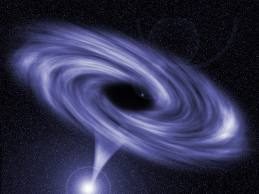Black holes - In Space
What is a black hole?
It is "a finite region of space within which there is a mass concentration high enough to generate a gravitational field such that nothing, not even light, can escape from it".

How is a black hole formed in space?
Black holes come from a process of gravitational collapse that was widely studied in the mid-twentieth century by several scientists, particularly Robert Oppenheimer, Roger Penrose and Stephen Hawking, among others.
This process begins after the "death" of a red giant (star of 10 to 25 or more times the mass of the Sun), meaning "death" the total extinction of its energy. After several billion years of life, the gravitational force of this star begins to exert force on itself, originating a mass concentrated in a small volume, becoming a white dwarf. At this point, this process can continue until the collapse of that star by the gravitational autoaction that ends up turning this white dwarf into a black hole. This process ends up gathering a force of attraction so strong that it catches even the light in it.

In simpler words, a black hole is the final result of the action of extreme gravity taken to the possible limit. The same gravity that keeps the star stable begins to compress to the point where the atoms begin to collapse. Orbiting electrons get closer and closer to the atomic nucleus and eventually merge with the protons, forming more neutrons throughout the process:

An object subjected to a compression greater than that of the neutron stars would have a gravitational field so intense that anything that came close would be trapped and could not come out again. It is as if the trapped object falls into an infinitely deep hole and will never stop falling. And since even light can not escape, the compressed object will be black. Literally, a "black hole." Today, astronomers are finding evidence of the existence of black holes in different parts of the universe.

Theoretical Classification
According to its origin, theoretically there can be at least three types of black holes:
- Supermassive black holes: with masses of several million solar masses. They would be at the heart of many galaxies. They are formed in the same process that gives rise to the spherical components of galaxies.
- Black stellar mass holes: formed when a star with more than 30-70 solar masses becomes a supernova and implodes. They have a mass of more than 3 solar masses. Its core is concentrated in a very small volume that is decreasing more and more. This is the type of black holes postulated for the first time within the theory of general relativity.
- Micro black holes: they are hypothetical objects, something smaller than the stellar ones. If they are small enough, they can evaporate in a relatively short period by emitting Hawking radiation. This type of physical entities is postulated in some approaches of quantum gravity, but can not be generated by a conventional process of gravitational collapse, which requires masses superior to that of the Sun.

http://www.muyinteresante.com.mx/junior/espacio/17/03/23/agujero-negro/
https://es.wikipedia.org/wiki/Agujero_negro
Hi,
If I am not wrong, your post is a direct google translation of the Spanish wikipedia page you quote as a reference. If I may give you an advice, this behavior is not well rewarded on steemit. It may be better to write something on your own than using google translate. Believe me ^^
Thanks in advance for your consideration!